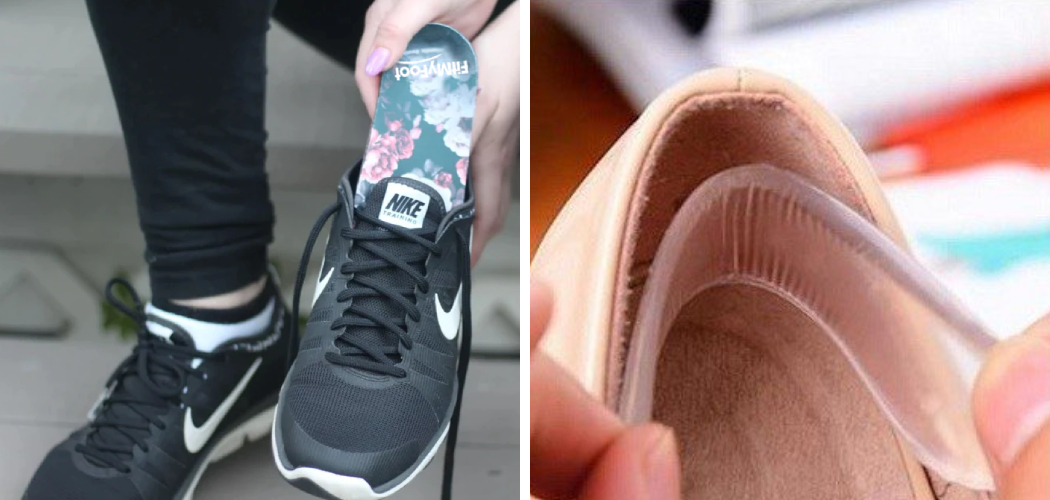If you’re like most people, you hate the feeling of a new pair of shoes rubbing your feet the wrong way. In this post, we will show you how to soften the back of new shoes to help make them more comfortable. Please keep reading for our top tips!
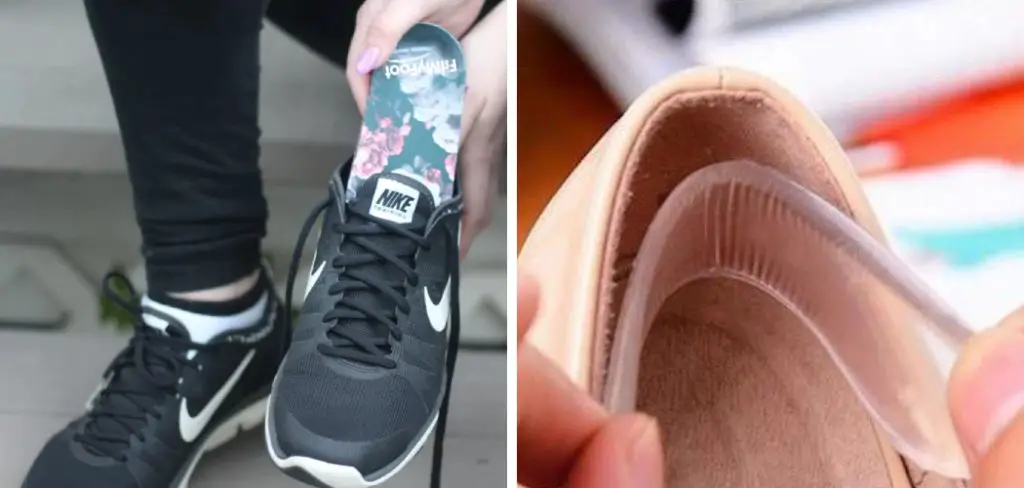
Summary: You can use a few different methods to soften the back of new shoes. One method is to rub mink oil or saddle soap into the material using a cloth. Another method is to use shoe trees. Shoe trees are small objects inserted into the shoe’s inside and help shape and stretch them out to make them more comfortable. Finally, you can also gradually break in your shoes by wearing them around the house with thick socks on for short periods until they are more comfortable.
Why Soften the Back of New Shoes?
Wearing new shoes can be an uncomfortable experience. They often rub and chafe against the feet, but they can also cause blisters and calluses. One way to help mitigate this discomfort is to soften the back of new shoes. This can be done by using a shoehorn or simply putting a layer of fabric between the heel and the shoe. Softening the back of new shoes helps to reduce friction and prevent irritation. Additionally, it can also help mold the shoes to the contours of your feet, making them more comfortable to wear. As a result, taking a few minutes to soften the back of new shoes can make a big difference in how comfortable they are to wear.
What You’ll Need?
- New Shoes
- Shoe Trees (optional)
- Water
- Sponge
- Soft Cloth
- Baby Powder
- Shoehorn
- Fabric (e.g., socks, bandana, cloth napkin)
How to Soften the Back of New Shoes – Use These 13 Simple Steps
Step 1: Use Your Hair Dryer To Heat the Back of Your Shoes
Start by heating the back of your shoes with a hairdryer. Hold the dryer about 6 inches away from the shoe and move it around in a circular motion. Do this for 30 seconds to 1 minute. This will help to soften the material and make it more pliable.
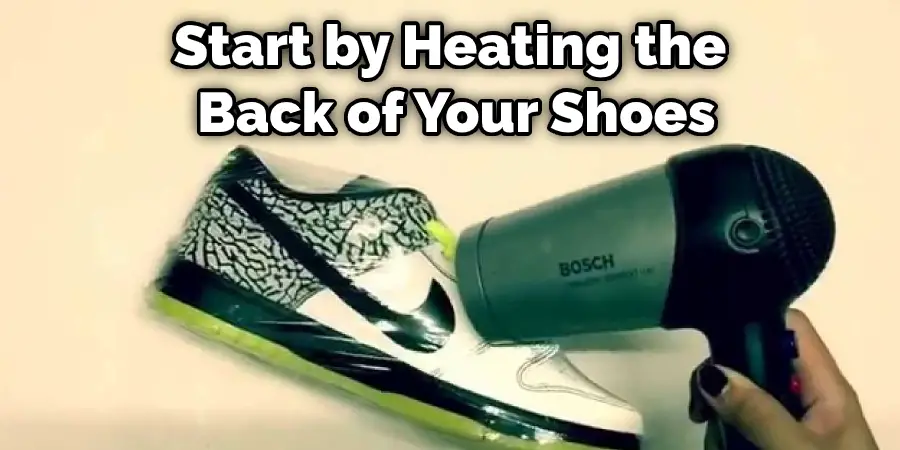
Step 2: Use Zip Lock Bags to Freeze the Back Side of New Shoes
If you don’t have any shoe stretching spray on hand, another way to quickly soften the back of new shoes is to use zip lock bags filled with water. Place the zip lock bags inside the shoes to fit snugly against the back, and then put the shoes in the freezer overnight. The frozen water will expand and stretch out the fabric of the shoes, making them more comfortable to wear. Then, just let the shoes thaw out for a few minutes before putting them on in the morning.
This method is best for shoes made from natural leather or suede, as synthetic materials may be damaged by freezing temperatures. You can also use this method to stretch out the width of too-tight shoes. Just place the water bags horizontally across the widest part of the shoes and freeze overnight.
Frozen water will expand and stretch out the fabric of the shoes, making them more comfortable to wear. So in the morning, just let the shoes thaw out for a few minutes before putting them on.
Step 3: Use a 2-way Shoe Stretcher
Shoe stretchers are an excellent way to soften the back of new shoes quickly. You can purchase one online or at most shoe stores if you don’t have one. To use a shoe stretcher, first, insert it into the shoe. Then, using the lever on the side of the stretcher, pump it up until there is a tight fit. Finally, leave the shoe stretcher in the shoes for at least 24 hours to allow the leather to stretch out.
Step 4: Wear Thick Padded Socks Regularly
Thick padded socks are your best friend when trying to soften the back of new shoes. By wearing them regularly, you can help break in the shoe and make it more comfortable for long-term wear. Just be sure to take them off at night so that your shoes can air out.

Step 5: Use a Shoe Horn
A shoehorn can be a great way to help break in the back of new shoes. It can help stretch out the shoe’s back and make it more comfortable to wear. Slip the shoehorn into the back of the shoe and then put your foot into the shoe. This will help stretch out the shoe’s back and make it more comfortable to wear.
If you don’t have a shoehorn, you can also use a rolled-up sock or a can of soup to help stretch out the back of the shoe. Put the sock or can into the back of the shoe and then put your foot into the shoe. This will help stretch out the shoe’s back and make it more comfortable to wear.
Step 6: Put Wooden Insert Inside the Shoe
This will help to stretch the shoe a bit and soften the back. You can buy these wooden shoe stretchers or make your own. Get a 2×4 piece of wood and cut it into two pieces that will fit snugly inside your shoes. Place the wood in the shoe overnight or for several hours. Remove when finished.
Step 7: Use Wet Newspaper
If your shoes are still too stiff, try using wet newspaper. Stuff each shoe with a wad of damp newspaper, and then wear them around the house for an hour or so. The moisture from the newspaper will help to soften the leather. You can also try this method with a damp cloth.
Step 8: Try Shoe Stretch Spray
If you want to how to soften the back of new shoes, try a shoe stretch spray. This can often help loosen up the tough areas of your shoes and make them more comfortable. Be sure to follow the directions on the bottle, though, as spraying too much can damage your shoes.
Step 9: Perform Soap Rubbing
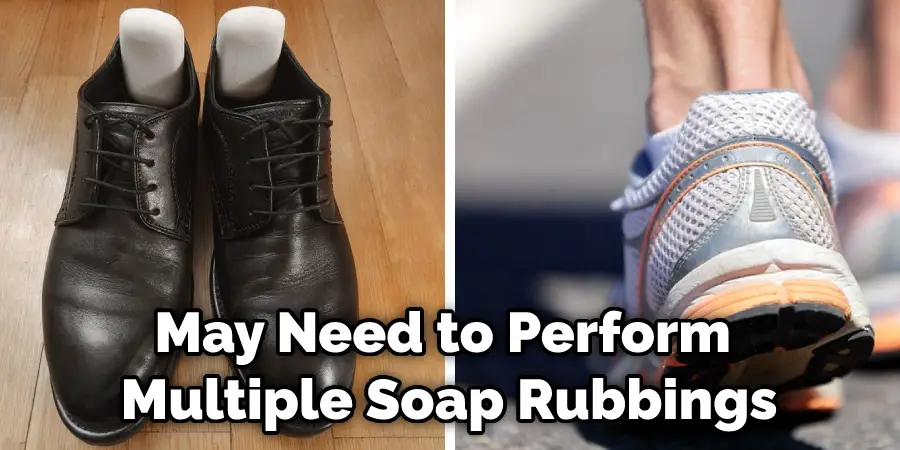
If your shoes have a lot of hard creases, you may need to perform multiple soap rubbings. Then, follow steps 4 through 8 again until the creases have softened to your liking. You can also use this technique to soften up the back of new shoes giving you blisters.
If the shoes still feel too stiff, you can try softening them further by rubbing a soap bar along the back. This will help break down the fibers and make the shoes more flexible.
Step 10: Use Rubbing Alcohol
If your shoes are still a bit stiff, you can try using rubbing alcohol. This will help to break down the materials and make them more flexible. Soak a cotton ball in rubbing alcohol and rub it over the back of the shoe. Let the shoes dry for a few minutes before wearing them. Repeat this process as necessary until the shoes are softened to your liking.
Step 11: Apply Vaseline Petroleum Jelly on the Affected Area
Petroleum jelly can help to soften the back of your new shoes. Apply some petroleum jelly to the back of your shoes and rub it in gently. You can also use a cotton ball to apply the petroleum jelly.
Step 12: Use a Shoe Tree
If you want to soften the back of your new shoes quickly, using a shoe tree is the best way to go. Shoe trees are inserted into the shoes and help to hold their shape and absorb any moisture that can cause the shoes to stiffen up. Insert the shoe trees into your new shoes and leave them overnight. You’ll notice a significant difference in the morning!
Step 13: Wear Thick Socks
Wearing thick socks is a great way to soften the back of new shoes. This will help break in the shoes and make them more comfortable to wear. Put on a pair of thick socks and then slip your feet into the new shoes. Then, wear them around the house for a few hours or even overnight to help loosen up the material.

Now that you know how to soften the back of new shoes, you can try some of these methods to make your shoes more comfortable. Be sure to experiment with different techniques until you find the best one for you. And remember, it may take a little time before the shoes are completely broken in. So be patient and keep at it!
How to Soften Back of New Tennis Shoes?
Wearing new shoes can be an exciting experience. They often come with that new shoe smell and look great on your feet. However, new shoes can also come with a price: blisters. Blisters typically form on the back of the heel, where the shoe rubs against your skin. The good news is that there are several ways to soften the back of new shoes and prevent blisters from forming.
Here are four methods to help you soften the back of new tennis shoes:
1. Break Them in Gradually
One way to prevent blisters is to break in your new shoes gradually. Start by wearing them for short periods, such as around the house. Then, gradually increase the amount of time you wear them each day.
2. Put Padding in The Shoes
Another way to soften the back of new shoes is to put padding in them. This will help cushion your skin and prevent it from rubbing against the shoe. In addition, you can use various materials for paddings, such as moleskin, gel insoles, or even a cotton ball.
3. Apply a Lubricant
A lubricant can help to reduce friction and prevent blisters from forming. Vaseline is a good option, but body lotion or baby oil can also be used. Apply the lubricant to the back of your heel and anywhere else the shoe rubs against your skin.
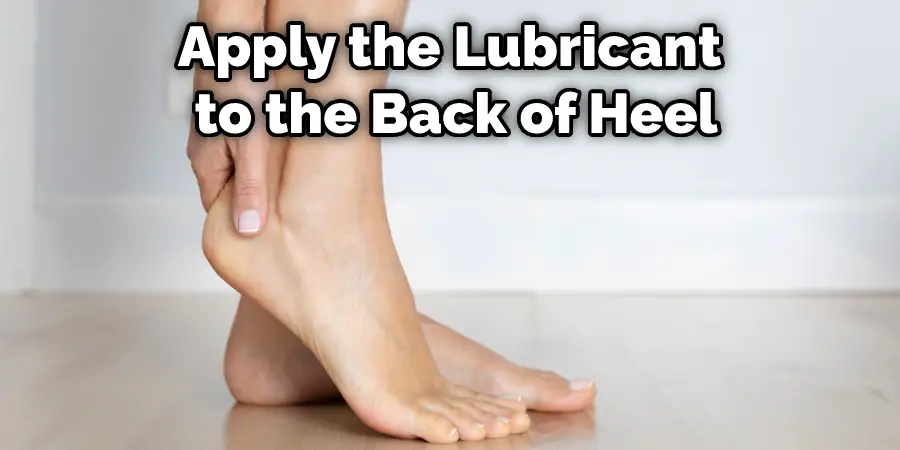
4. Wear Socks
Wearing socks can help to absorb some of the friction and prevent blisters. Choose a pair of socks that are comfortable and fit well. If you are prone to blisters, you may want to consider wearing two pairs of socks.
Does It Matter if I Wear My New Shoes in Or out Of the House?
As any fashion-savvy individual knows, not all shoes are meant to be worn in all settings. For example, it would be considered a faux pas to wear flip-flops to a formal event such as a wedding. In contrast, it would also be odd to wear stilettos to the beach. So with this in mind, does it matter if you wear your new shoes in or out of the house?
The answer may surprise you. While it is technically fine to wear your new shoes inside the house, they should be broken outdoors. This is because the soles of the shoes will suffer less wear and tear on soft carpets or rugs than on hard floors such as tile or concrete.
Is There a Specific Way to Put on My New Shoes to Fit Comfortably and Arent Too Tight?
There’s no specific way to put on new shoes to fit comfortably and aren’t too tight. However, you can follow a few tips to help make the process easier. First, make sure you have the right size shoe. This may seem obvious, but it’s worth repeating. Ill-fitting shoes will never be comfortable, no matter how much you break them in. Second, avoid shoes with a lot of padding or support in the back. These can often make shoes feel tighter and more constricting.
Third, try to find shoes with softer material in the back. This will help to mold your foot and provide some cushioning. Finally, be sure to lace up your shoes correctly. This will ensure that they’re not too tight and that you have a good fit. Following these tips should help to make the process of breaking in new shoes much easier.
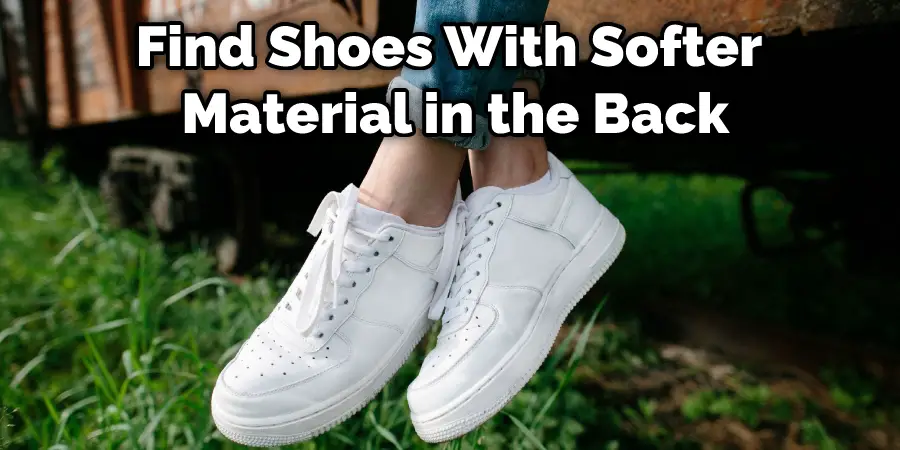
Frequently Asked Question
What Are the Benefits of Wearing New Shoes for Longer?
There are several benefits to wearing new shoes for longer periods. First, new shoes provide support and stability to the feet, preventing injuries. Additionally, they can help improve balance and posture. Wearing new shoes also helps protect the feet from calluses and blisters. Finally, breaking in new shoes gradually can extend their lifespan.
Should I Be Careful Not to Walk Around with Them on All Day?
One of the best ways to soften the back of new shoes is to walk around in them for short periods throughout the day. This will help to gradually break them in and make them more comfortable to wear. Additionally, you can try wearing thicker socks or using a shoe insert to help cushion your feet and prevent blisters.
Conclusion
You now know how to soften the back of new shoes. All you need is a shoe stretcher, water, and time. Follow these simple steps to stretch your shoes for a perfect fit. Have you ever tried this method before? Let us know in the comments below!

